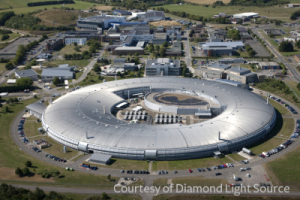Mar 27 2017
Innovative research investigating X-ray absorption spectroscopy (XAS) methods for memory applications has been deemed as a showcase study at one of the UK’s top science facilities.
 Credit: Courtesy of Diamond Light Source
Credit: Courtesy of Diamond Light Source
A team of researchers from the University of Southampton and University of Kent have analyzed the role of titanium dioxide thin films in emerging memory devices using Diamond Light Source, the Oxfordshire-based UK’s national synchrotron facility.
Diamond works like a massive microscope, driving electrons to generate bright light that scientists can apply to explore anything from viruses and vaccines to fossils and jet engines.
The research was guided by the Prodromakis team in the Department of Electronics and Computer Science (ECS) that is recognized as world-leading in the emerging area of memristive devices and their applications in microelectronics. The research has been enabled by flexible testing platforms being developed by the team’s start-up ArC Instruments Ltd that in this case was used for decoding the switching mechanisms behind memristive devices.
Diamond Light Source is showcasing the titanium films research as a leading case study via its Industrial Liaison Office.
The case study reads: “Titanium dioxide is one of the most widely used metal oxides and in recent years it has attracted increasing attention in the form of thin films for applications in microelectronics. In particular, it has found potential application in resistive random access memory (RRAM) cells, where the titanium dioxide active layer is sandwiched between two metal electrodes in a metal-insulator-metal (MIM) device architecture. Because of their simple structure, RRAM cells, also known as memristors, can be incorporated into devices with high density that function at low power and high speed.”
“Researchers from the University of Southampton and the University of Kent used microfocus X-ray absorption spectroscopy (XAS) techniques on Beamline I18 at Diamond Light Source to investigate highly disordered titanium oxide-based materials at the atomic scale in its virgin state and after switching to low resistance states by bias.”
“To date, only a few studies have been published on XAS analysis of TiO2−x thin films for memristive devices, and they are all based on the analysis of the Ti L2,3-edge. However, the spectroscopy techniques applied in this study to the Ti K-edge have been shown to be more effective in assessing very small changes in the local coordination around Ti due to structural modification, in particular through the analysis of the Ti K pre-edge XANES region under operating conditions.”